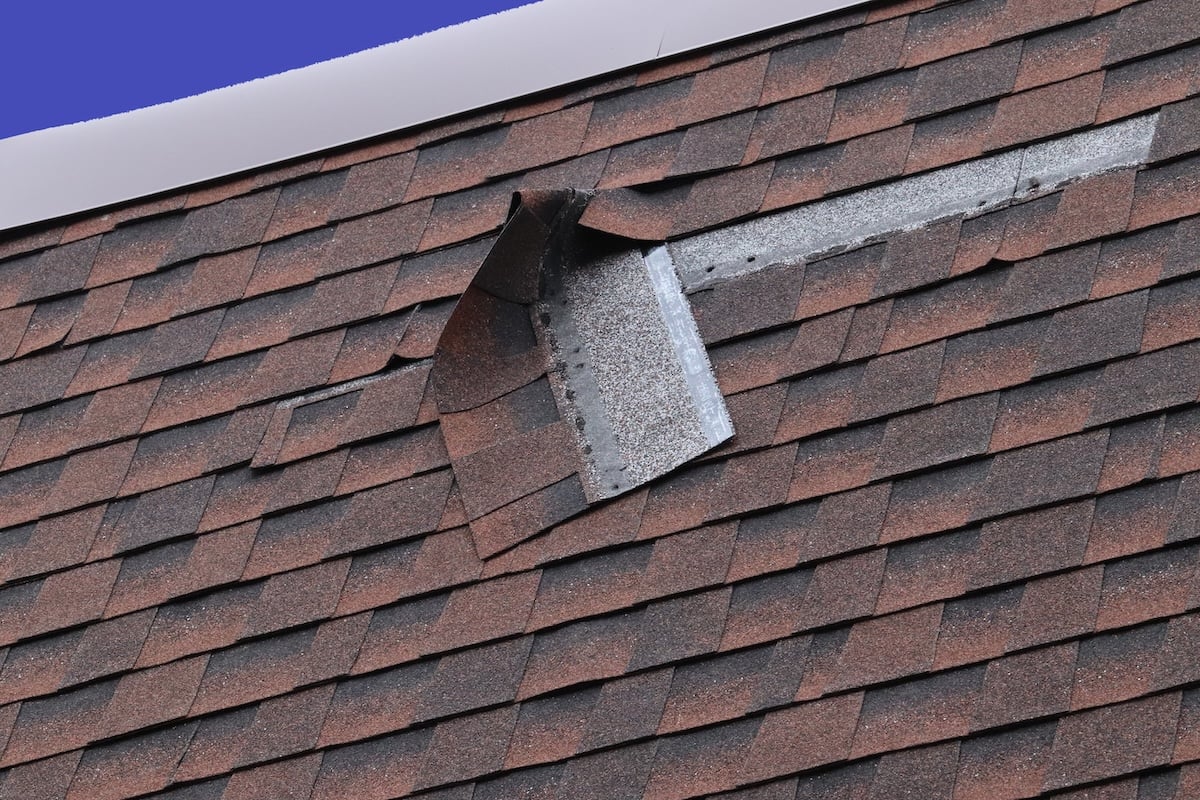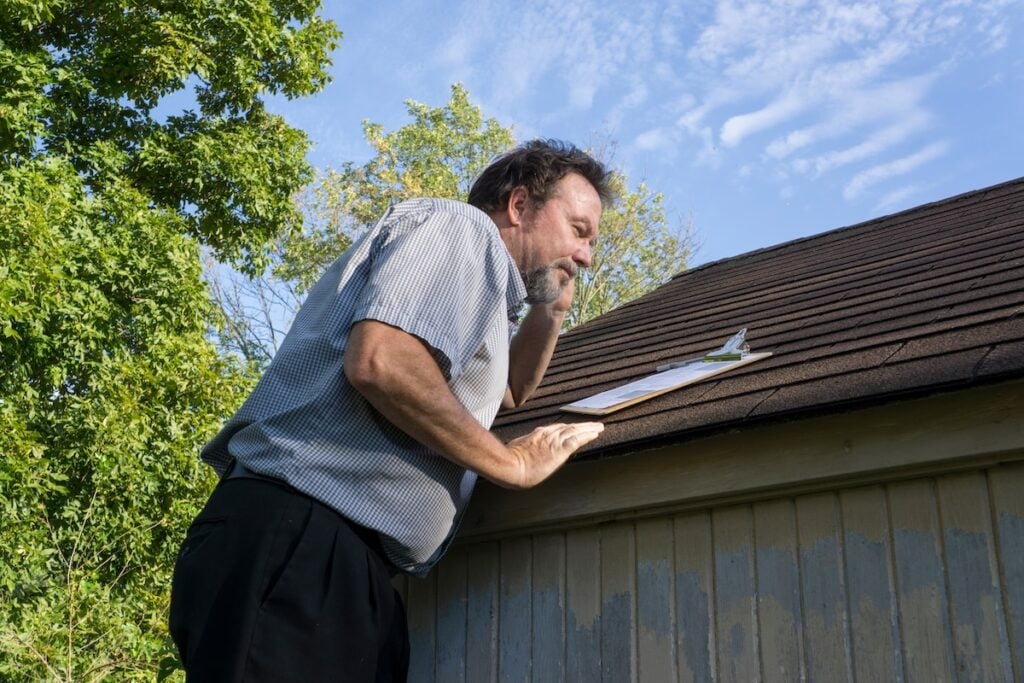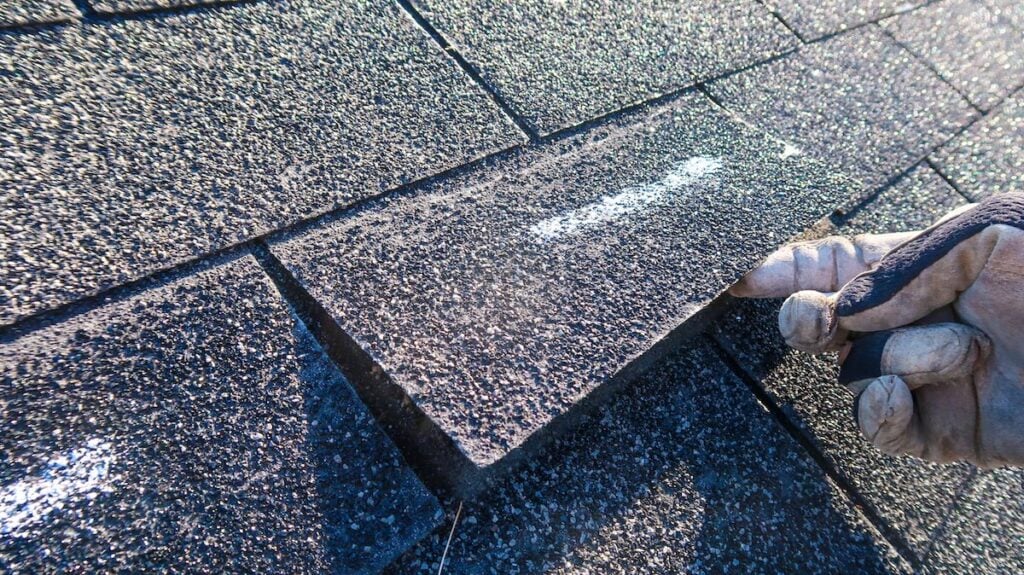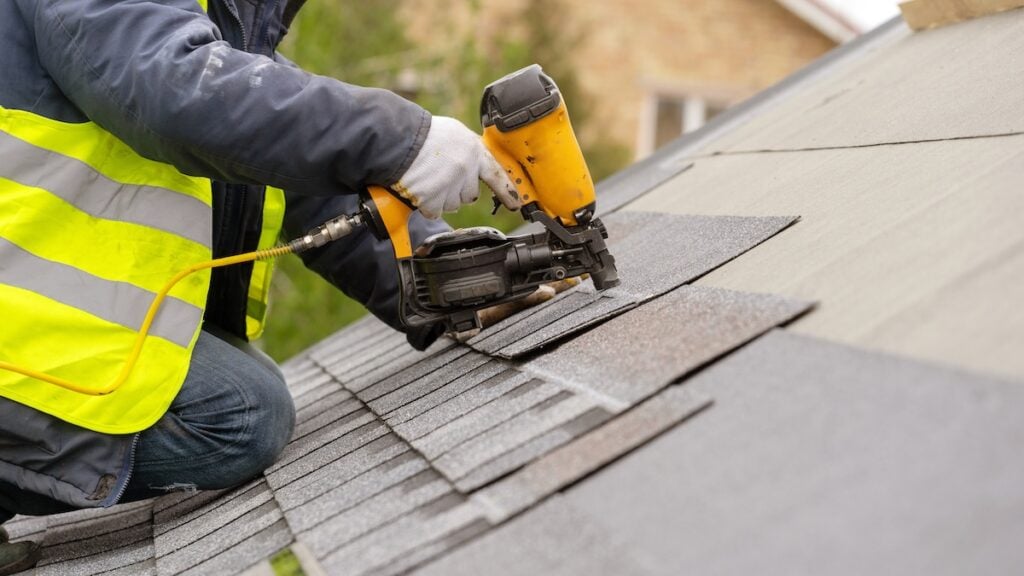
6 Step Guide To Inspect & Repair Wind Damage To Roof
6 MIN READ
September 9, 2025
Wind damage to roof systems is one of the most common problems homeowners face after severe storms. Strong gusts can loosen shingles, tear flashing, or even expose your home’s structure to the elements. Knowing how to inspect your roof for signs of damage and take the right repair steps will help protect your home and prevent costly water infiltration.
- Early inspections prevent bigger issues: Catching wind damage quickly stops leaks before they spread.
- Proper documentation helps with insurance: Photos and detailed notes strengthen your claim.
- Professional repairs ensure safety: Skilled contractors restore your roof’s integrity and warranty coverage.
💨 Understanding Wind Damage to Roofs
High winds put stress on roofing materials in ways that may not always be visible from the ground. Even moderate storms can lift shingles slightly, creating entry points for water. Over time, these vulnerabilities can grow into serious leaks or structural damage if not addressed promptly.
How Wind Affects Different Roofing Materials
Asphalt shingles are the most susceptible to wind uplift, especially when sealant strips weaken over time. Metal roofs generally hold up well, but panels and fasteners can still shift under extreme gusts. Tile and slate roofs may crack or dislodge, creating safety hazards for people and property below. Each material requires different inspection techniques and repair strategies.
Common Signs of Wind Damage
- Missing shingles: Clear evidence of wind uplift and displacement.
- Curled or lifted edges: Shingles that appear raised or out of place.
- Exposed underlayment: Visible areas beneath shingles or tiles.
- Loose flashing: Metal around chimneys, vents, and skylights pulled away by wind.
- Debris on the ground: Shingle pieces or granules near your home’s foundation.

✅ 6 Steps To Inspect and Repair Wind Damage
Handling wind-related roof issues doesn’t have to feel overwhelming. By following a structured approach, you can assess the situation accurately and ensure timely repairs.
- Prioritize Safety First: Avoid climbing on your roof immediately after a storm. Check the area for downed power lines, broken branches, or loose materials before approaching.
- Inspect From the Ground: Walk around your property to spot missing shingles, flashing damage, or fallen debris. Use binoculars for a closer look.
- Document All Damage: Take photos and videos from multiple angles. Capture both close-up details and wide shots of the entire roof.
- Contact a Roofing Professional: Schedule a professional inspection to confirm damage and identify issues you may not see.
- File an Insurance Claim: Provide your documentation and contractor’s assessment to your insurance provider.
- Schedule Prompt Repairs: Work with a trusted contractor to repair or replace damaged sections quickly to prevent further deterioration.
🤝 Working With a Roofing Contractor After Wind Damage
Choosing the right contractor is critical after storm damage. Poor workmanship or incomplete repairs can leave your home vulnerable to future problems.
What to Look for in a Contractor
- Storm damage expertise: Experience with wind and storm repairs ensures proper techniques.
- Local presence: Nearby contractors understand weather challenges and can respond quickly.
- Insurance knowledge: Contractors who assist with claims make the process easier.
- Proven track record: Positive reviews and references demonstrate reliability.
Why Recon Roofing & Construction Is the Right Choice
At Recon Roofing & Construction, we know how stressful storm damage can be for homeowners. Our team responds quickly with thorough inspections, detailed documentation, and high-quality repairs. We guide you through the insurance process and restore your roof with craftsmanship designed to last.

⭐️ Preventing Future Wind Damage
While you can’t control the weather, you can take steps to make your roof more resistant to strong winds.
- Upgrade to Wind-Resistant Materials: Modern shingles and roofing systems are rated to withstand high wind speeds. Upgrading to these materials can significantly reduce the risk of future damage.
- Reinforce Flashing and Fasteners: Securing metal flashing and ensuring all fasteners are properly installed helps prevent uplift during storms. Contractors can use additional sealants and adhesives for added protection.
- Schedule Regular Maintenance: Routine inspections ensure loose shingles, compromised seals, or aging materials are addressed before storms hit. Preventive care strengthens your roof’s resilience.
💵 The Cost of Wind Damage Repairs
The price of repairs varies based on the extent of damage and the type of roofing material. Homeowners may face anything from minor shingle replacements to partial roof reconstruction.
Factors That Influence Cost
- Severity of damage: More extensive repairs require more materials and labor.
- Roofing material: Tile or slate repairs generally cost more than asphalt shingle fixes.
- Labor rates: Local demand after storms can affect pricing.
- Additional structural issues: Water damage, insulation replacement, or gutter repairs can increase costs.
📋 Insurance and Wind Damage Claims
Most homeowners insurance policies cover wind damage, but the process of filing a claim can feel overwhelming. Being prepared with documentation and professional assessments makes it easier.

Tips for Navigating Insurance
- Act quickly: File your claim promptly to avoid delays.
- Provide thorough documentation: Photos, videos, and inspection reports strengthen your case.
- Communicate with your adjuster: Stay in regular contact for updates and approvals.
- Rely on contractor support: Many roofing contractors, like Recon, can meet with adjusters and advocate for proper coverage.
🗓️ Long-Term Benefits of Timely Repairs
Repairing wind damage promptly doesn’t just restore your roof—it also improves your home’s overall protection. A secure, weather-tight roof reduces energy costs, maintains home value, and provides peace of mind during future storms.
Added Value for Homeowners
- Extended roof lifespan: Prevents premature aging caused by ongoing leaks.
- Better energy efficiency: Properly sealed roofs improve insulation performance.
- Increased property value: Well-maintained roofs appeal to buyers if you sell.
🛠️ Protect Your Home With Professional Wind Damage Repairs
When high winds strike, the best defense is quick action. By inspecting your roof, documenting damage, and scheduling timely repairs, you can protect your home and avoid costly long-term issues. Recon Roofing & Construction has the expertise, reliability, and commitment to restore your roof’s strength and durability.
Don’t wait for small issues to become major problems. Contact Recon Roofing & Construction today to schedule an inspection and get the expert help you need to repair wind damage to roof systems.
